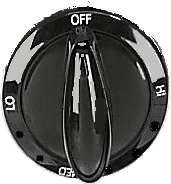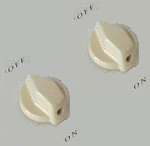Group (mathematics)/Catalogs
Jump to navigation
Jump to search

The mathematical group concept represents a rather simple and natural generalization of common phenomena, so examples of groups are easily found, from all areas of mathematics.
Different classes of groups
Three different classes of groups are commonly studied:
Examples of finite discrete groups
- The trivial group consisting of just one element.
- The group of order two, which f.i. can be represented by addition modulo 2 or the set {-1, 1} under multiplication.
- The group of order three.
- The cyclic group of order 4, which can be represented by addition modulo 4.
- The noncyclic group of order 4, known as the "Klein viergruppe". A simple physical model of this group is two separate on-off switches.
Some physical models
Some common physical objects provide excellent introductions to group theory.
Model of the cyclic group of order 4.
It's easy to see the following:
|
Model of the non-cyclic group of order 4.
It's easy to see the following:
These results can be summarized in the following table:
|
Many examples of groups come from considering some object and a set of bijective functions from the object to itself, which preserve some structure that this object has.

